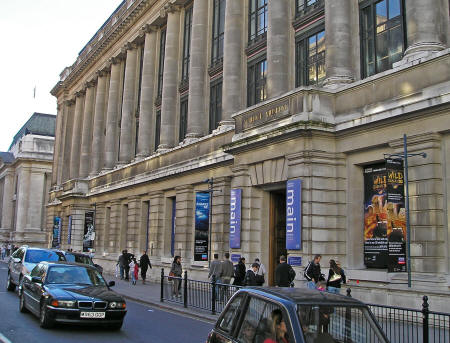Science received comparatively little attention at the Great Exhibition, a product of British attitudes towards it in the mid nineteenth century. Science was not widely regarded, as remarked upon by a number of contemporary commentators. Charles Babbage, for example, in his Reflections on the Decline of Science in England and Some if its Causes, was already writing in 1830 that Britain was "much below other nations" in the more difficult and more abstract sciences. He found it shocking that a country "so distinguished for its mechanical and manufacturing ingenuity" should be so indifferent to the technical aspects that provided the foundations for its success [1].
Such commentators voiced real fears that Britain's indifference to scientific knowledge would endanger Britain's status as the premier industrial power. Eric Hobsbawm and other economic historians have highlighted the differences between a "first" and "second" industrial revolution. During the "first", textile based, industrial revolution, "the important inventions were simple, the product of skill, practical experience and a readiness to try anything new and see if it worked", whereas the key component of the "second" industrial revolution was the mechanization of machine-making [2]. This depended on standardization and the growth and increasing importance of science, particularly chemical and electrical knowledge. An inventor who had never heard of Newton, for example, could devise something like the spinning-mule, whereas the least technically qualified inventors of the age of electricity had to have some knowledge of electricity [3].
With all the attention focused on heavy machinery in motion, very little attention was paid to science at the Exhibition. What attention there was paid was often cursory at best. The editor of a synopsis of the Official Catalogue, for example, described Fromont's turbine, a significant advance in hydraulic machinery, as nothing more than an efficient horizontal water wheel [4].
Illustration of Fromont's turbine, taken from the Official Descriptive and Illustrated Catalogue 1851
Electrical machines were classified as "philosophical instruments" within the fair's classification system and the editors of the Official Catalogue gave them little attention with short entries and few illustrations. Engineers regarded electrical devices with contempt. Isambard Kingdom Brunel, for example, told John Scott-Russell, that he wished to see excluded from the exhibition "any mention of electrical machines which as yet can be considered only as toys". [5]
Britain won 16 out of 31 council medals awarded in Class X ("Philosophical Instruments and Miscellaneous Contrivances"), including three for photography and four for the electric telegraph. France, its nearest rival, took home nine. Despite such a clear margin of victory, however, few of the British medals were for instruments with commercial application, whereas the French medals included awards for barometers, an air pump, a heliostat and theodolites. Such results appeared to bear the fears of contemporary commentators out.
Henley's electric telegraph, one of the few applications of electricity thought to be important. Source: http://www.gracesguide.co.uk/1851_Great_Exhibition:_Official_Catalogue:_Class_X.:_William_Thomas_Henley
The Science Museum
On a more positive note, the Great Exhibition was a resounding financial success, resulting in a surplus of £186,000. After much debate, it was decided to apply the surplus to buy land in South Kensington on part of which the South Kensington Museum was built to house exhibits given to the Royal Commission by exhibitors following the Exhibition. The land now accommodates the Science Museum in London, a museum dedicated to the furtherance of science.
The Science Museum, London
____________________________
Notes:
[1] Auerbach, Jeffrey. The Great Exhibition of 1851: A Nation on Display. (Yale University Press, 1991) (hereafter Auerbach); pg 123
[2] Hobsbawm, Eric. Industry and Empire (Penguin, 1999). Pg 150
[3] Ibid Pg 151
[4] Auerbach Pg 123
[5] Ibid



No comments:
Post a Comment